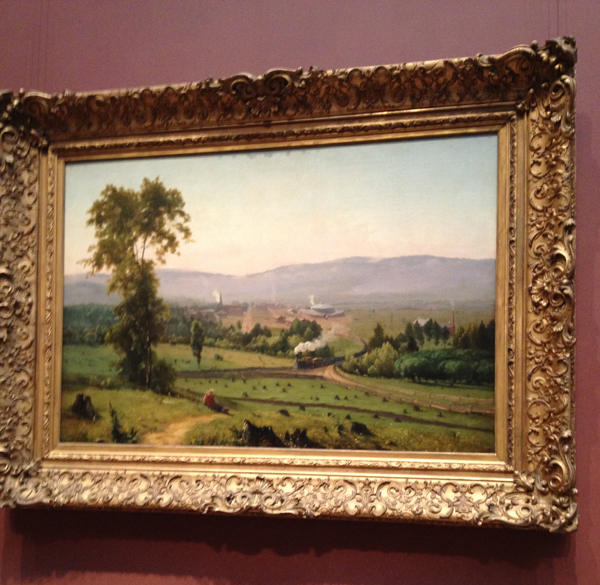Second Beach, Newport by Worthington Whittridge: Background Research & the Drawing Salon
Often when I begin a specific copy I will do some research on the artist I am copying, this involves learning about the specific techniques and color palette he may have used, but it also includes diving into the ideas that informed him as an artist. In the first post about my current copy, Second Beach, Newport by Worthington Whittridge, I shared how he was of the Hudson River School (HRS) of painters, but by the time this particular painting was created the Tonalist sensibility had begun to pervade the arts in America, especially those of the landscape. So this painting, a simple scene, is created within a rich milieu of thought and practice.
Three great references for better understanding this era of American art are 1) William Kloss’ DVD lectures on American Art, 2) the book, A History of American Tonalism

Typically my ability to research ends with the books, lectures, and personal observation, however for this copy I am fortunate that the NGA also happens to have a special program, the Drawing Salon, and that this February covered the Hudson River School: Tone, Light, and Atmosphere.
This program included some lecturing on the important ideas that informed this group of artists and some time to sketch in the gallery.
The main thought that was conveyed was that the artists of the Hudson River School believed in the ability of the American landscape to elevate the viewer, that the emotive quality of landscape paintings had and could inspire the viewers to feel more whole and connected with the potential of the United States. Thomas Cole, considered the founder of the HRS, wanted to use landscape art to look at the present and into the future, inspiring something more, elevating those who viewed his work and to inspire greatness in their actions.
 {The Lackawanna Valley by George Inness, 1855}
{The Lackawanna Valley by George Inness, 1855}
During the Drawing Salon, I chose to sketch the painting, The Lackawanna Valley by George Inness, an artist more associated with the Tonalists than the HRS, so I thought it would be fitting to analyze his painting. This painting was a commission from a railroad company that wanted to feature the new round house built by the company and to highlight the progress made by expanding the track. If you look closely, you will see that the foreground field and the middle ground fields are dotted with tree stumps, all cut down in the name of "progress" and George Inness portrayed this as not such a great thing in the name of progress.
 {my tonal sketch of the Lackawanna Valley painting}
{my tonal sketch of the Lackawanna Valley painting}
I was fascinated at how atmosphere was presented in this painting, the lightening of color saturation and how other than the foreground tree it was only the man-made smoke that had the highest contrast. Making it totally felt that man had a strong presence in this valley.
................................................................................................
Next week I will share how the second painting session of working on my copy, Second Beach, Newport progressed. Until then, if you would like to learn more about where I started, here is my post about the first painting session.

